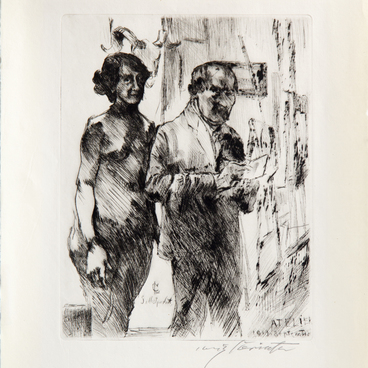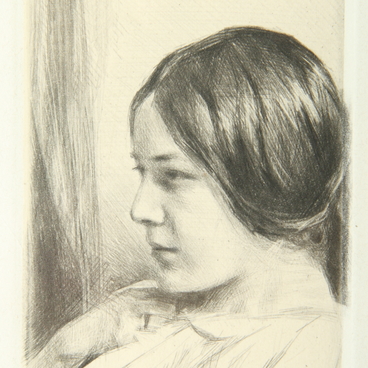Kathe Kollwitz (1867—1945) was the first woman ever elected a professor of Prussian Academy of Fine Arts. Today, she is a German artist of the highest demand. A street in Berlin is named after her (Kollwitzstrasse), and two memorial museum exist in Germany — one in Berlin, and one in Cologne.
Woman with Dead Child
Время создания
1903
Размер
45x55,5 cm
Техника
Chromolithography
4
Открыть в приложении#1
Kathe Kollwitz
Woman with Dead Child
#3
#4
In her work, Kollwitz offered a new image of a woman of the 20th century, reflecting lots of grief and losses she had suffered. The artist lost her son during World War I, and her grandson — during World War II. These circumstances greatly influenced her mindset and the artistic manner.
#5
Kathe Kollwitz was born in a socialist family, and throughout her entire life, she defended the ideals of fairness and non-violence dedicating her work to subjects of social importance. She studied sculpture, painting and graphics. In Paris, the great reformer Auguste Rodin was her mentor, and she adopted his skill of working with form. The artist believed that it was possible to change the world with the help of Art. Kollwitz was a convinced pacifist and believed that sometime in future there will be no wars.
Her graphic pieces are filled with the strongest emotions. When Kollwitz was working of her famous series (The Weavers, Peasant War), they had the same scaring provocative effect as today’s war documentaries. She purposefully selected lapidary and brutal artistic language to speak about the problems of the modern society.
#6
The topic of family and motherhood was in the focus of Kollwitz work. It echoed with her personal story and tragedy.
#7
On the chromolithograph piece Woman with Dead Child dated 1903, the artist depicted a small breathless body with the mother bending over it. Kollwitz selected dark brown and blue colors, which make the atmosphere gloomier. The figures look like they stand out of the black emptiness and transfer the viewer into the existentialist space of the mother’s grief. This is exactly how Kollwitz’s art affected her contemporaries — it was an engaging drama of life and death.
#8
In addition, the composition of the piece is very much iconographic. It resembles the famous Pieta — the Lamentation by Virgin Mary often depicted in European art.
#9
Kaliningrad Regional Museum of Fine Arts
читать дальшескрыть
00:00
00:00
1x
Woman with Dead Child
Время создания
1903
Размер
45x55,5 cm
Техника
Chromolithography
4
Открыть в приложении
Поделиться


